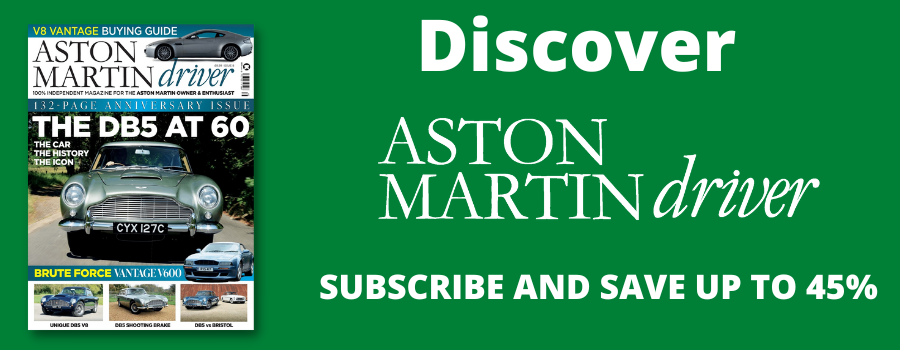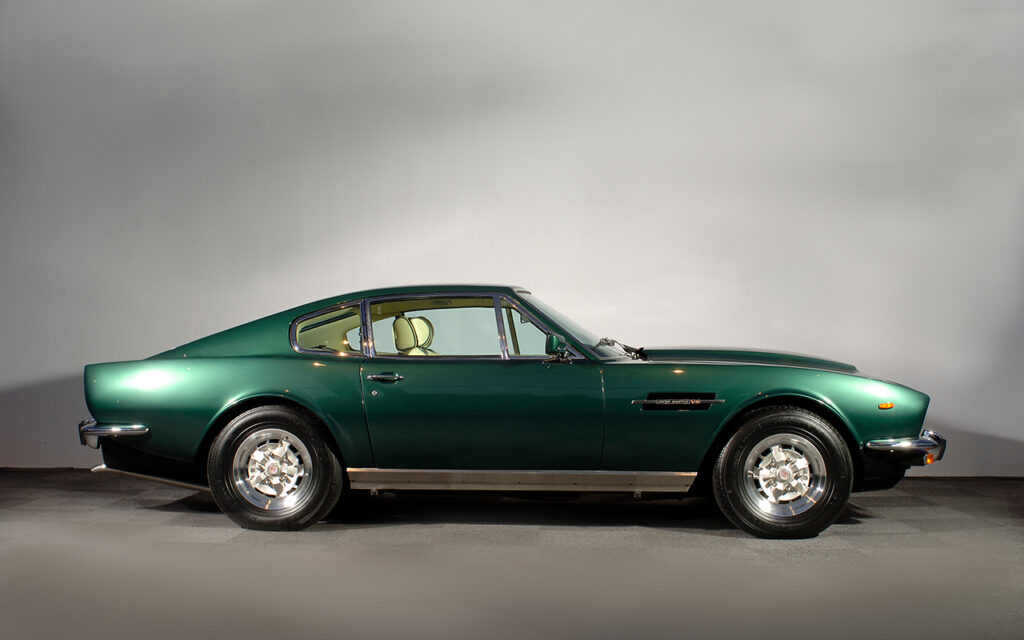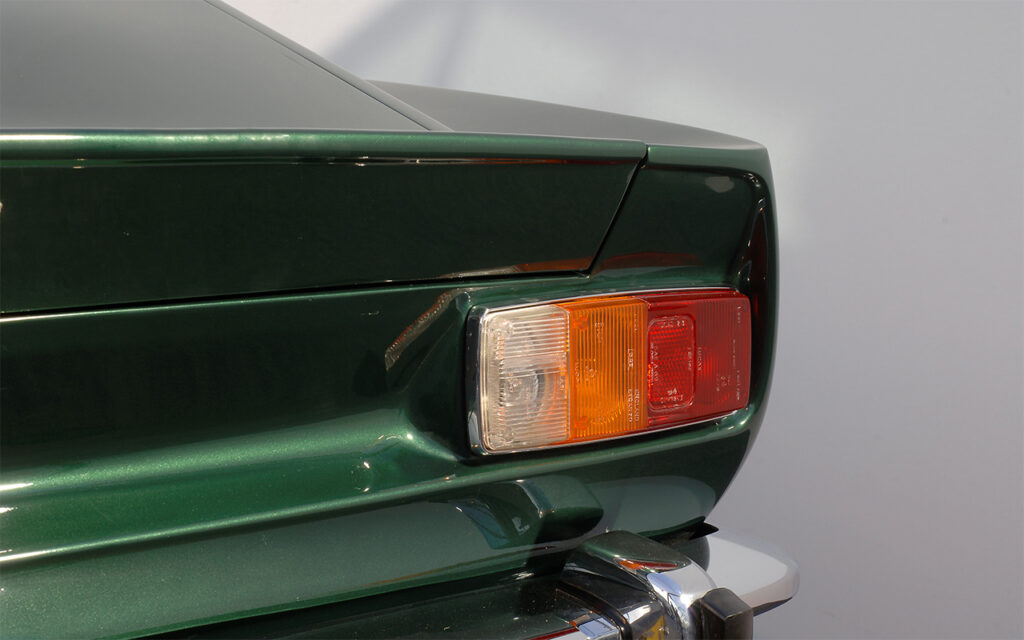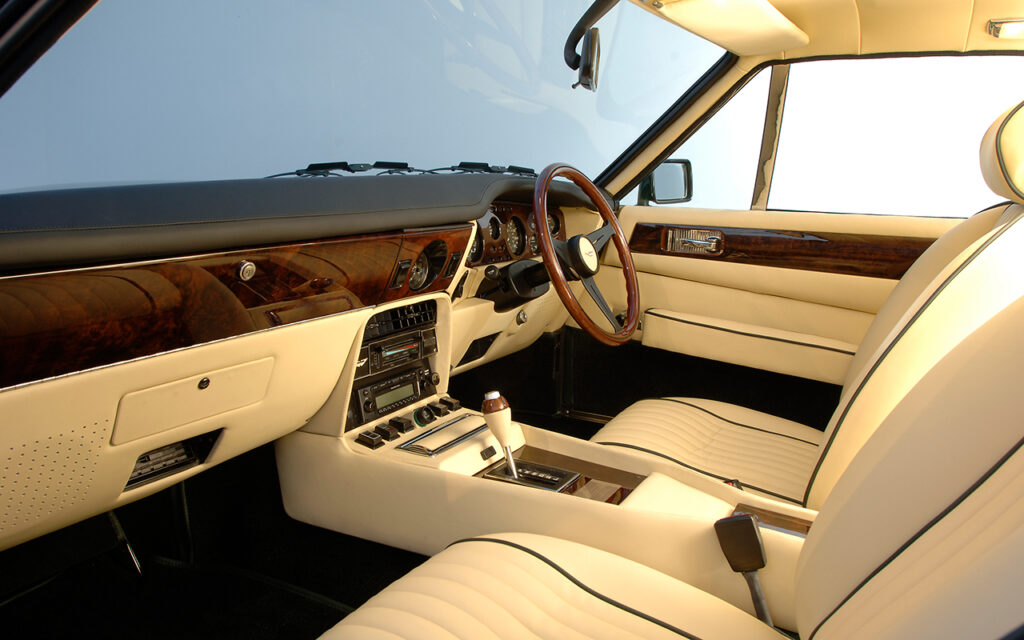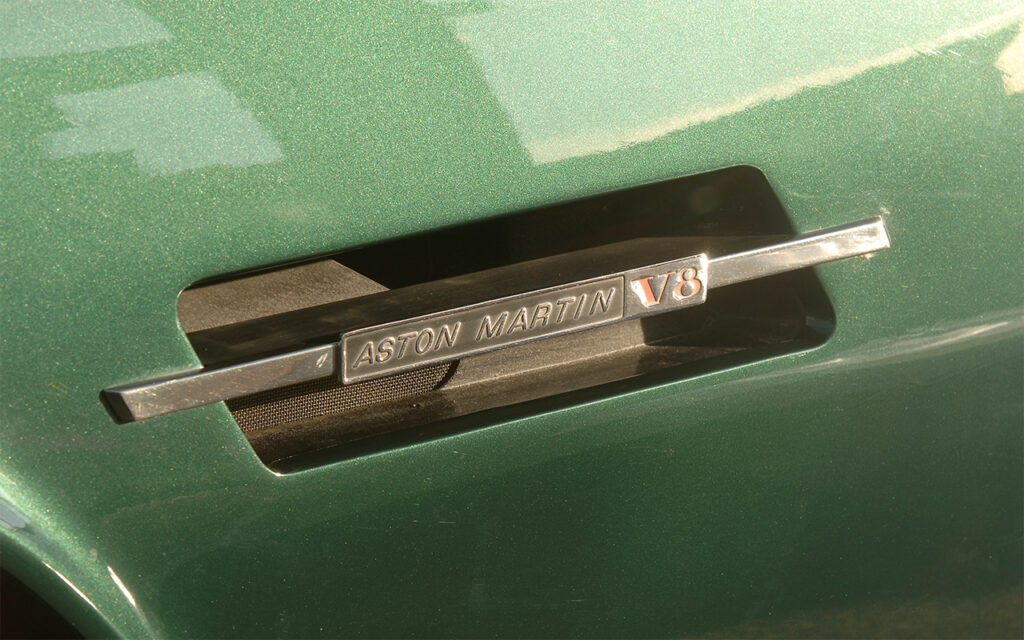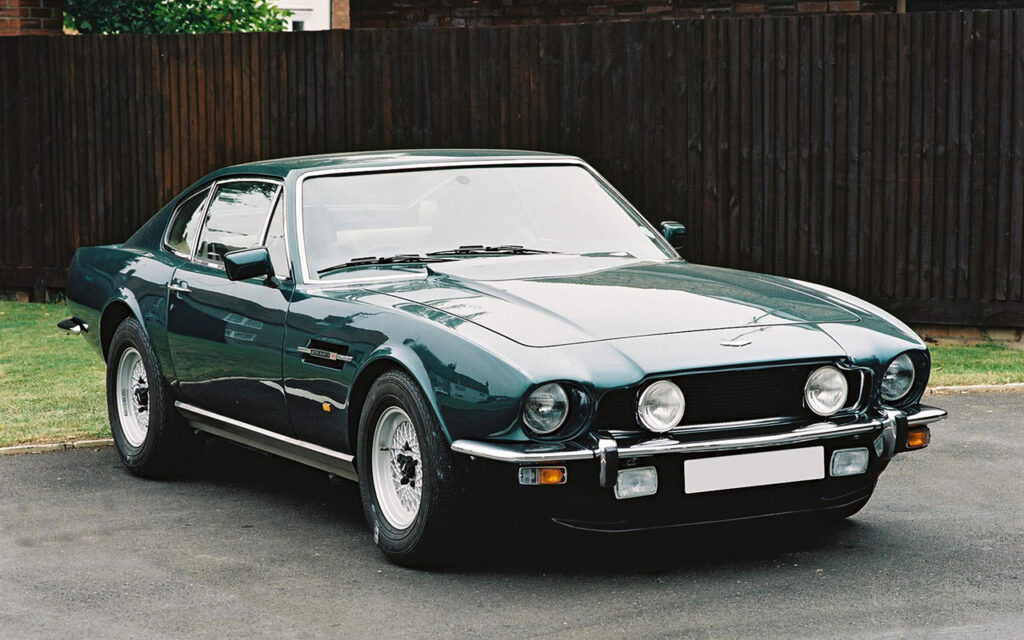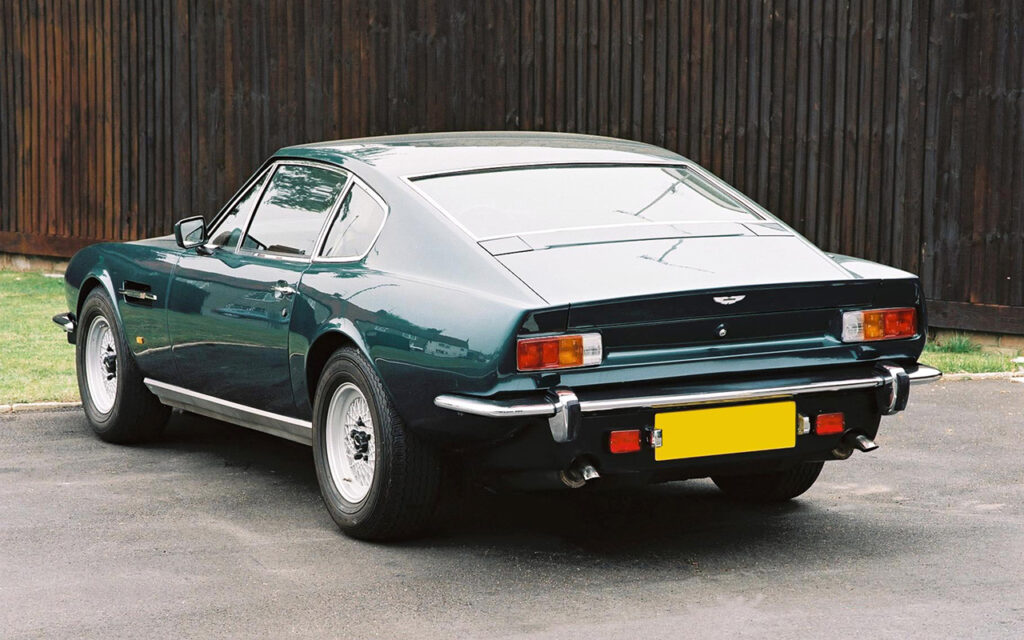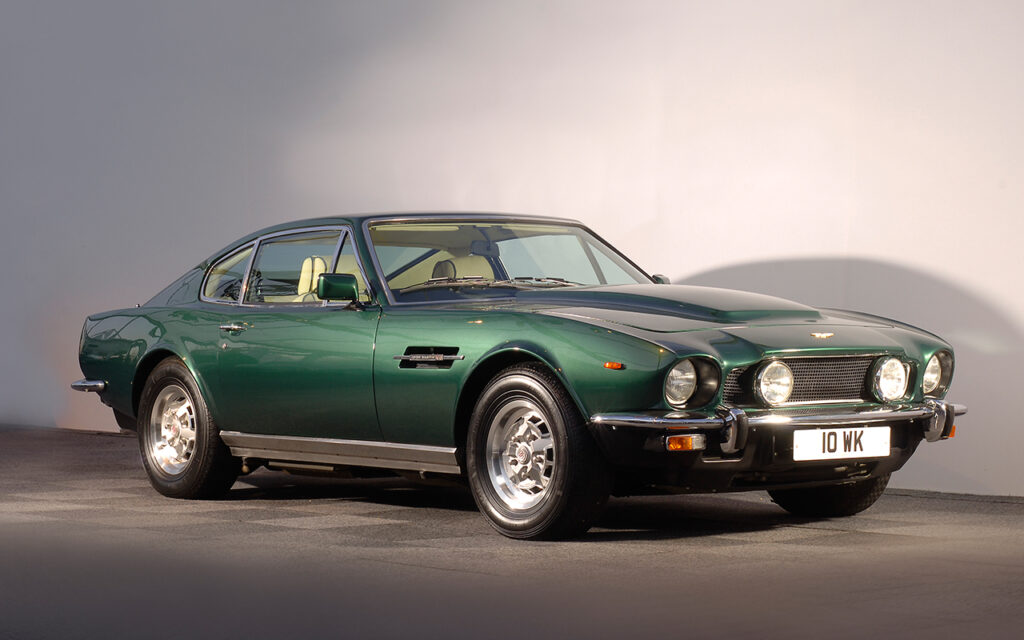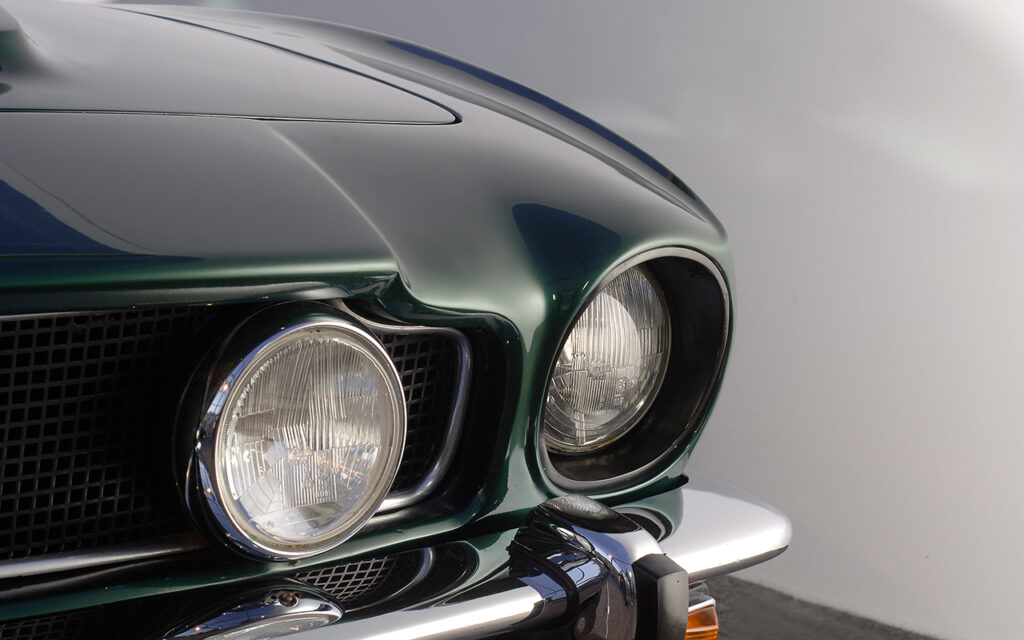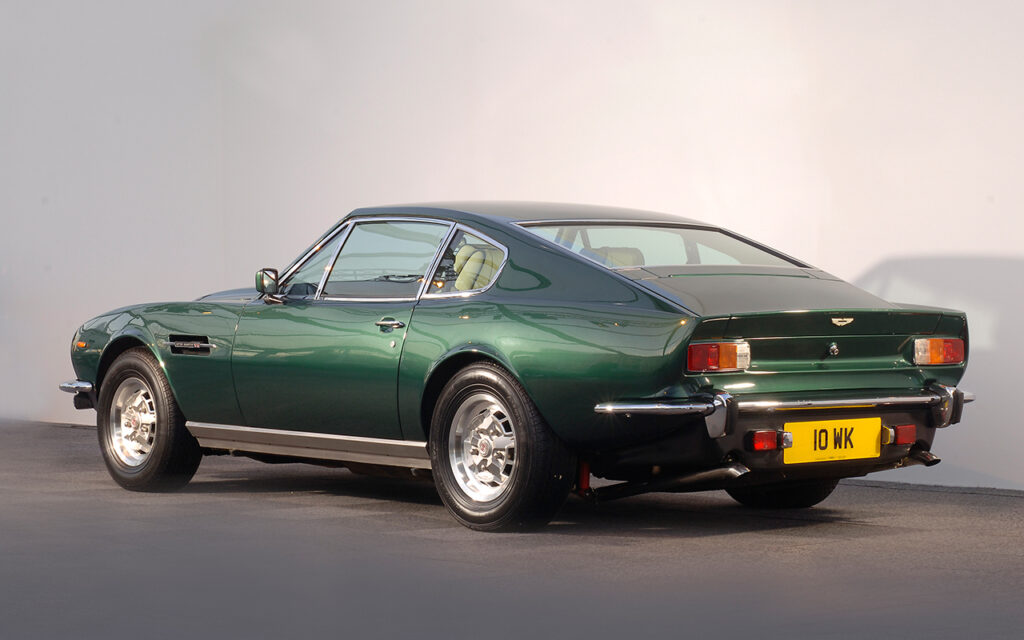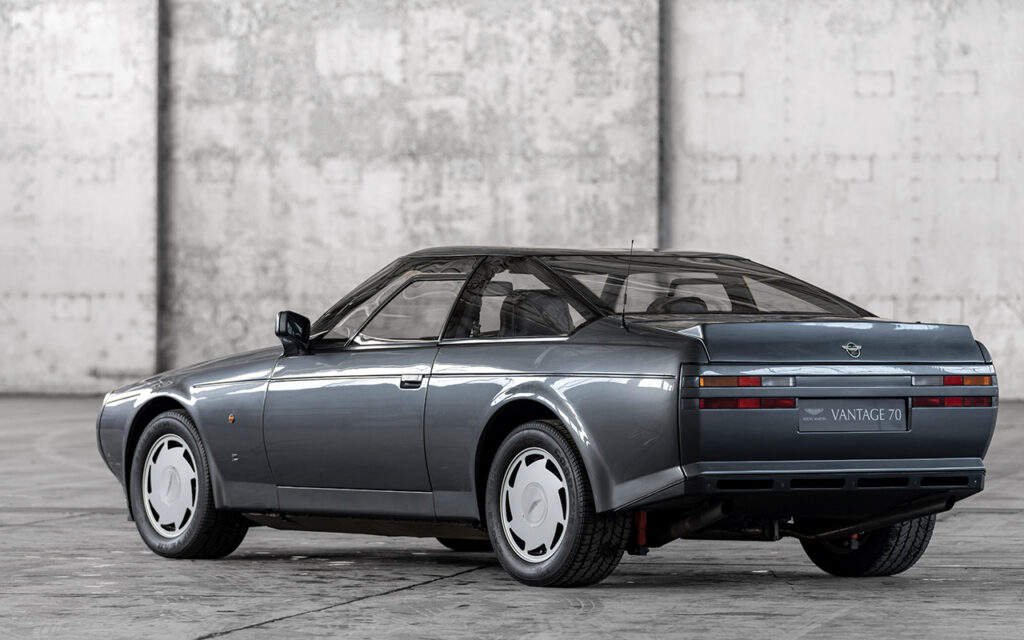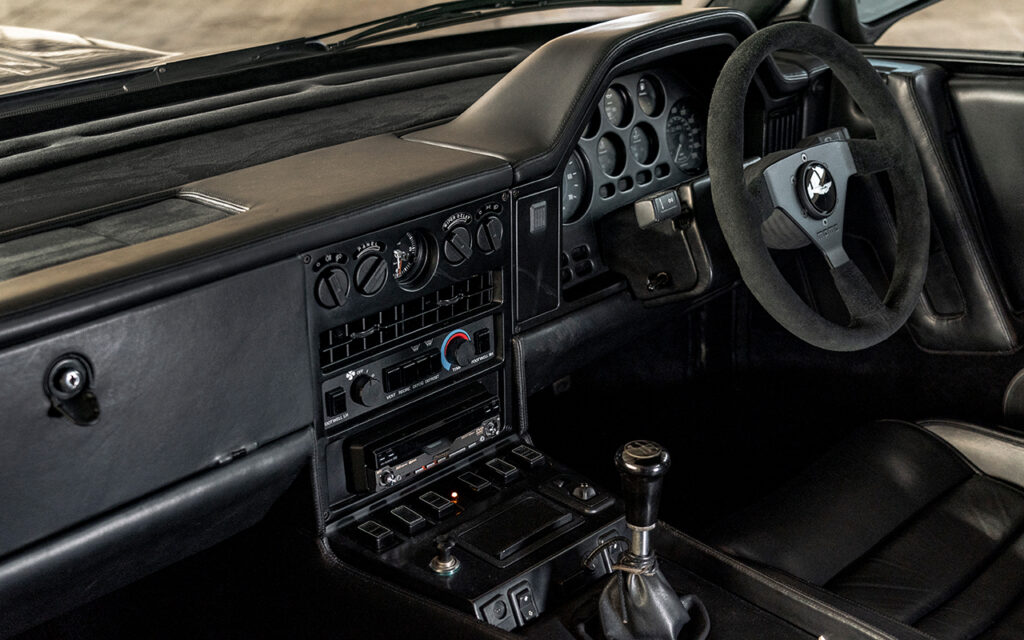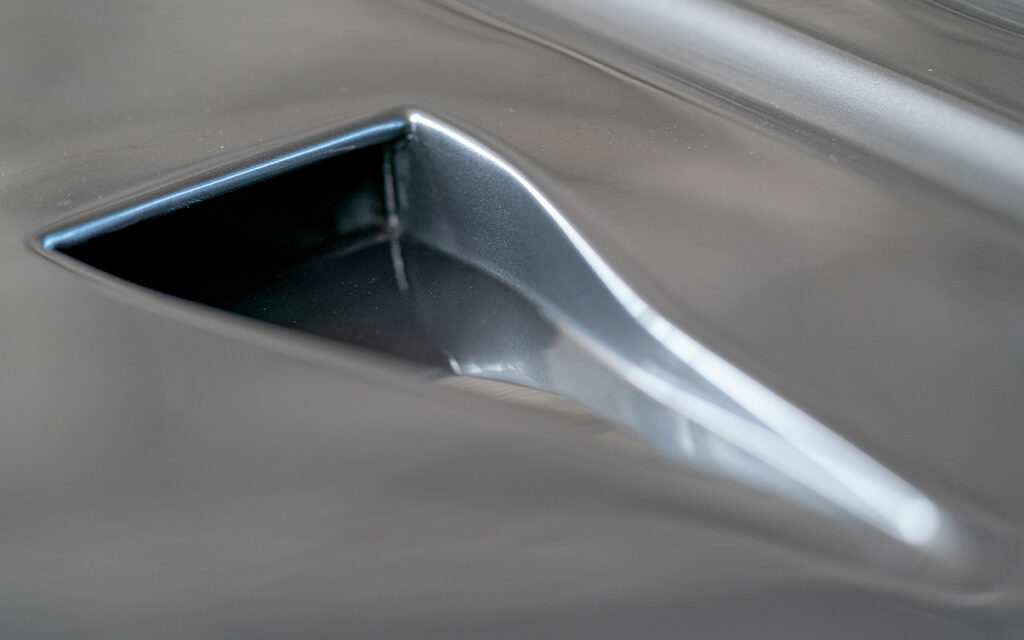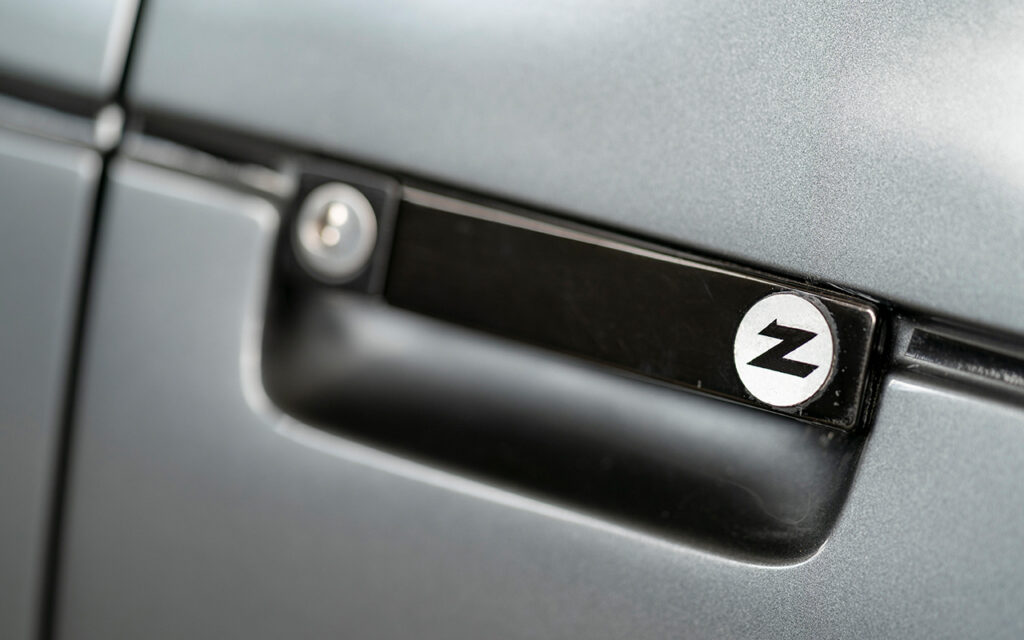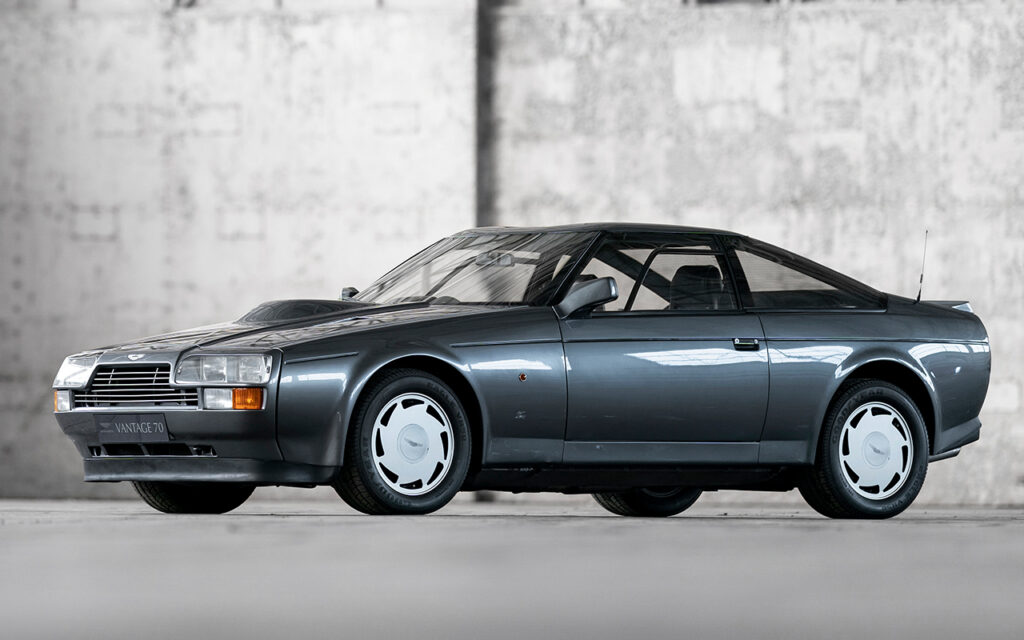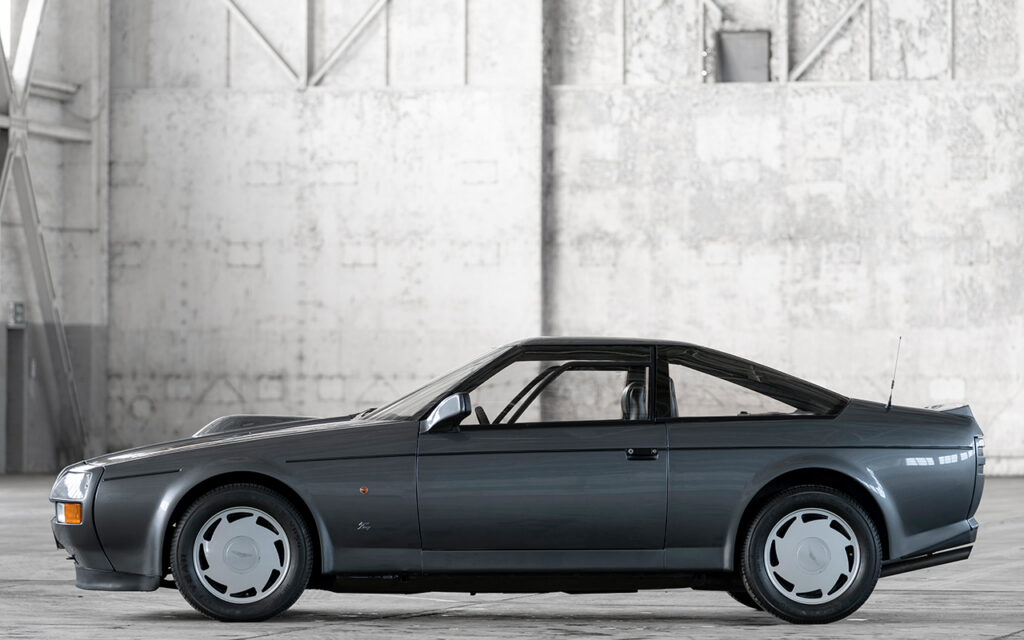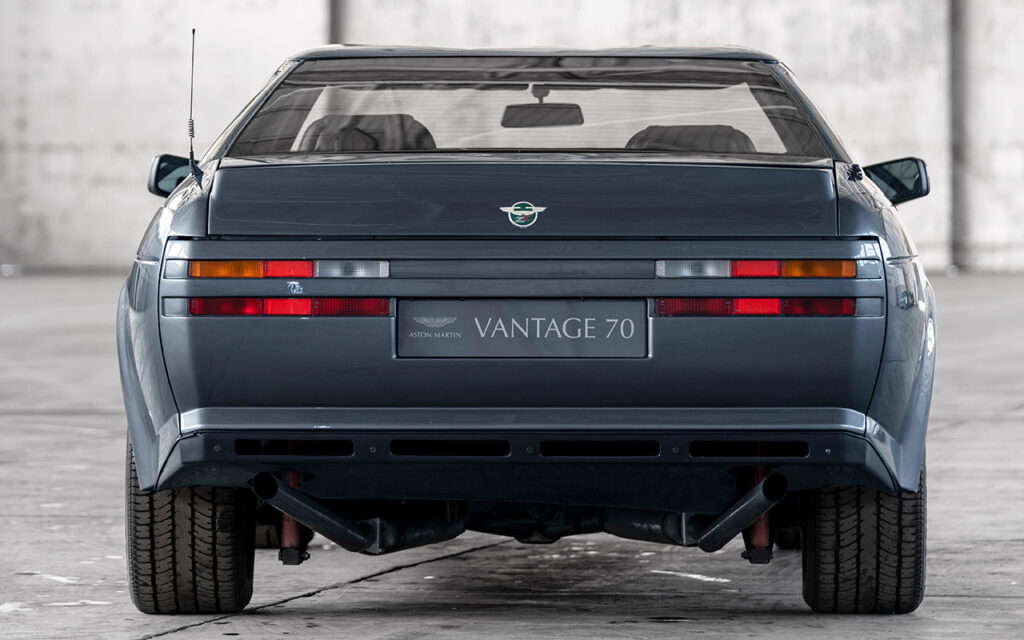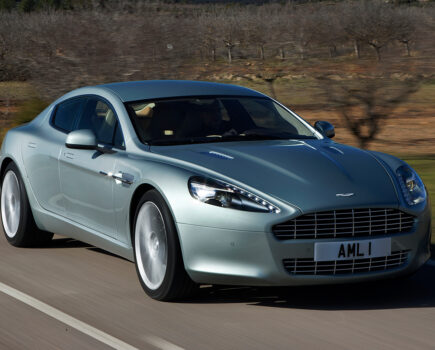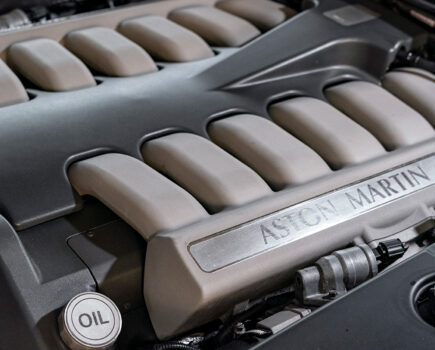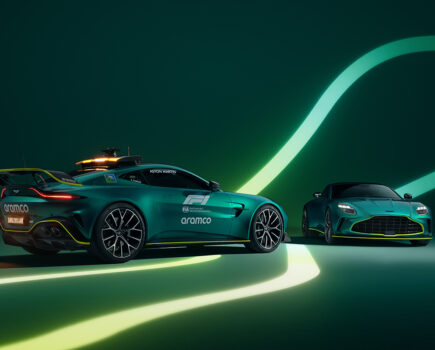The Aston Martin V8 took the firm into the supercar league, revived Lagonda, and attracted the attention of Ford
Words: Jon Burgess
David Brown, Aston Martin chairman, wanted even faster and more luxurious road cars as the 1970s approached; after attempts to bring a racing Lagonda V12 to road car production failed, thoughts turned towards a V8 for reasons of weight, packaging and power output. Testing revealed in the early 1960s that the Tadek Marek six couldn’t be taken out much past 4.1-litres, and the desire for a high-speed, four seat touring car selected a V8 configuration by necessity; rival Bristol came to a similar conclusion during this decade.
Marek, tasked with bringing the new engine to life, began work in 1963 and had a running prototype 4.8-litre prototype two years later, known as DP218. Extensive testing in modified DB5s showed some oil starvation, but it was nothing compared to what happened in competition. Marek wasn’t keen on seeing his engine race, but despite breakages, the engine was enlarged to 5.0-litres and fitted a pair of Lola factory entries for its 1967 T70 MkIII racing car. At Le Mans, one car holed a piston, while other retired with fuel injection issues.
With a litany of faults evident, it was clear the new V8 wasn’t up to scratch for use in Aston’s new car, the DBS. It launched instead with the outgoing 4.0-litre Marek six in 1967, while Aston’s engineers worked to improve the V8’s stiffness. Alan Crouch, later of Ricardo, added stiffening ribs, strengthened the main bearing housings and added longer cylinder head bolts, all the while increasing capacity to 5.34-litres. The work took almost two years, and the DBS V8 which resulted, complete with Bosch fuel injection, looked outwardly similar to the DBS.
An air dam and stiffer suspension did much to contain the V8’s quoted output of 345bhp, while GKN alloys wheels directed air to larger brakes. At the rear, De Dion suspension, beloved of Aston chassis designer, Harold Beach, put power to the road; he had wanted to fit such suspension as far back as the DB4, and it had made a fleeting appearance on the ill-fated Lagonda Rapide.
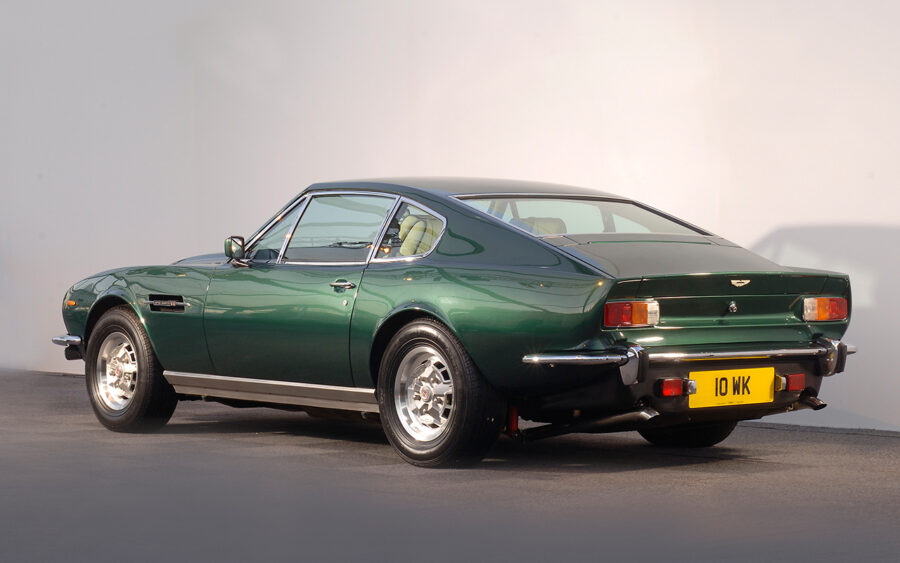
DBS V8 production didn’t last long before new nomenclature arrived in 1972; goodbye DBS V8 (and chairman David Brown), hello AM V8 saloon. By Series 3 production had begun in August, a quartet of Webers replaced had replaced the Bosch fuel injection; a retrograde step in some eyes, but the earlier system had proved unreliable. It made the concurrent Vantage modifications (from 1977) easier to produce for future models.
By the end of the 70s, the ‘Oscar India’ raft of mechanical and visual facelifts were coming in (1978) alongside the drophead Volante variants and the radical, William Towns-penned Lagonda V8 had finally gone on sale (1979). The latter four-door saloon had been announced three years earlier, plagued by electronic bugs; previous attempts to bring back the marque, based on the DBS V8 and AM V8 saloon, didn’t even break double figures.
The five-lamped, gull-winged, stillborn Bulldog of 1980 remained a fascinating one-off – but it wasn’t the first time a Marek V8 had been mounted in the middle of a road car. Nine years previously, factionalism within the Brown family had killed off any chance of the Siva S530 making production.
1986 finally saw fuel-injection return for the Series 5 AM V8s, though the ‘X Pack’ power options retained carburettors. Radical work with the surgeon’s knife brought back a modern interpretation of the DB4 Zagato – the V8 Zagato. Shorter, lower, stiffer and far lighter than the V8 saloon, fewer than 100 were built over a four-year period.
With the AM V8 platform showing its age, and with a Bond appearance now to its name (in 1987’s The Living Daylights, as well as a cameo in 2021’s No Time To Die), work began on its successor, the Virage. Using a shortened Lagonda V8 platform as its basis, US engine specialists reworked the Marek V8 for the Nineties, gifting it a pair of quad cam cylinder heads. Debuting in 1988, the Virage, its career undistinguished, birthed the brutal twin supercharged nameplate-in-its-own-right Vantage, in 1993, before shuffling off the mortal coil in 1996; the Vantage, further updated, finally laid the Marek V8 to rest in 2000.
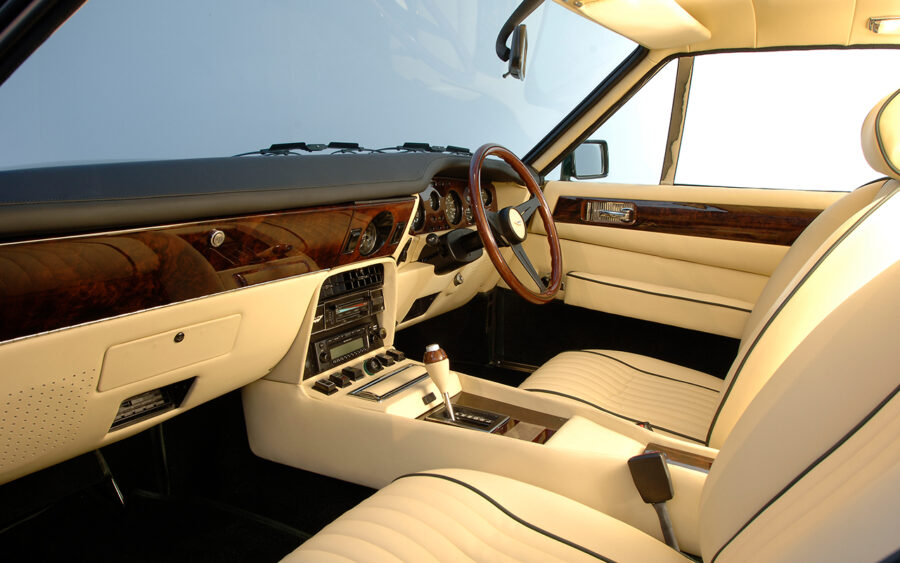
Aston Martin V8 timeline
1969
DBS V8 announced; Sir David Brown has a one-off four door Lagonda DBS V8 produced for his personal use.
1970
5.34-litre, Bosch fuel-injected DBS V8 (Series 1) finally arrives after nearly three years of the stop-gap DBS. Far more powerful than the outgoing Marek six, it weighs just 30lb more fully dressed.
1971
US certification finally arrives for the DBS V8 in October, allowing cars to be sold there. Mid-engined Aston V8-powered Siva S530 mooted as a production car but remained a one-off.
1972
Series 1 V8 production ends in May, giving way to the AM V8 (Series 2). Sir David Brown relinquishes control of Aston Martin to William Wilson’s Company Developments. Sotheby Special/Ogle Aston Martin revealed at Montreal, with special Triplex glass and a tail full of brake lights (showing stopping force). Two eventually built.
1973
AM V8 (Series 3) cars debut; Bosch fuel injection is replaced by four twin-choke Weber carburettors.
1974
Four-door Aston Martin Lagonda V8 (Series 1) launched; seven are built, with production terminating two years later.
1975
A new consortium, Aston Martin Lagonda (1975), saves the firm from insolvency.
1976
‘Razor edge’ William Towns-styled Aston Martin V8 Lagonda (Series 2) debuts, sales don’t start until 1979, however.
1977
‘Britain’s first supercar,’ the V8 Vantage (Series 1), appears. Power is up to 390bhp; aerodynamic aids include a chin air dam and large rear spoiler.
1978
‘Oscar India’/’October Introduction’ (Series 4) AM V8s released, with a facelift and revised suspension to control rear-end lift at speed. V8 Vantage production continues, with cars facelifted to match. Drophead Volante (Series 1) launches.
1980
Gullwinged Bulldog supercar revealed with a mid-mounted Marek V8 a target speed of 200 mph. It remained a one-off, but still exists, having been restored by Classic Motor Cars (CMC) during the coronavirus lockdown.
1981
Victor Gauntlett becomes Aston’s new chairman.
1986
AM V8 (Series 5) cars now launched, with Weber-Marelli fuel injection and BBS wheels.
Volante (Series 2) finally updated with Oscar India styling package and body-kitted Volante Vantage (Series 3) no available.
Lagonda V8 (Series 3) arrives. Extensive changes to electronics, styling mostly unaltered.
V8 Vantage (Series 2) arrives at the same time, with further ‘X Pack’ upgrades available.
Spiritual successor to the DB4 Zagato, the V8 Zagato, shown at the Geneva Motor Show, available in coupe and Volante drophead body styles.
1987
The Living Daylights features a ‘winterised’ V8 Volante.
Lagonda V8 (Series 4) revealed at the Geneva Motor Show. William Towns rounds off the edges of the car and changes the pop-up lights for fixed units. Ford buy 75 per cent of Aston Martin shares.
1988
Quad-cam Virage launches, with the help of US engine specialist, Callaway. Chassis based on Lagonda V8 (Series 2).
1989
Last AM V8 (Series 5s) of all body styles, produced.
